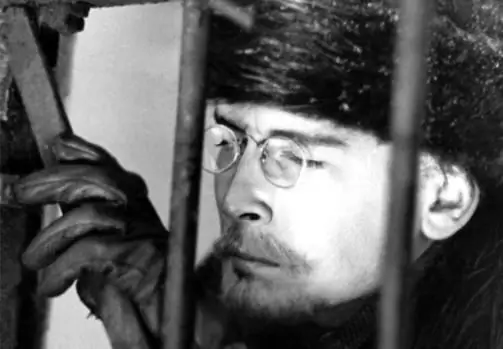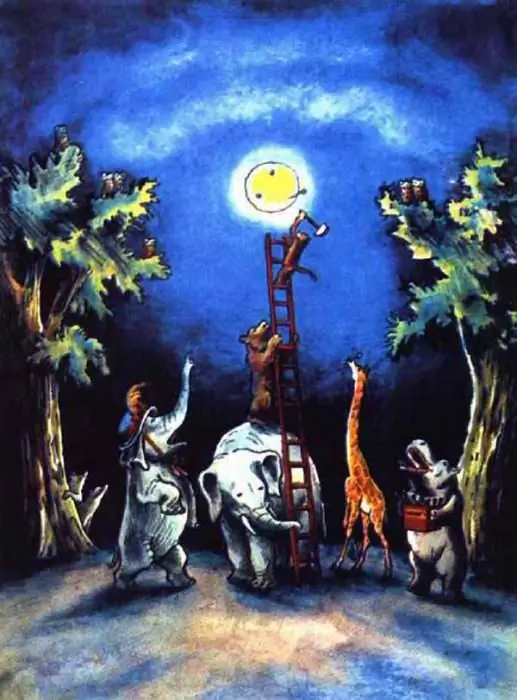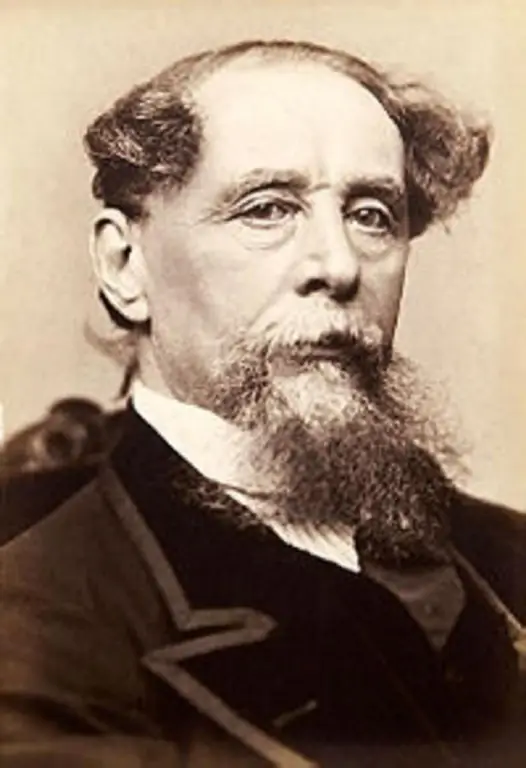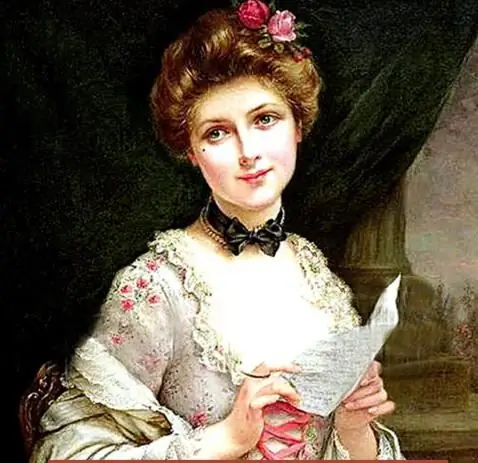2026 Author: Leah Sherlock | [email protected]. Last modified: 2025-01-24 17:46:30
The architects of Italian origin made a significant contribution to the creation of the unique appearance of the two Russian capitals, Moscow and especially St. Petersburg. The work of Giacomo Quarenghi is a bright page in the history of European and Russian architecture of the era of classicism.

Besides the projects of buildings of various scales and purposes, among which there are many embodied ones, his legacy includes graphic sheets with real views of cities (veduta) and fantasy architectural compositions. Several generations of architects studied the craft using them.
Southern Homeland
Giacomo Quarenghi (1744-1817), who considered himself a truly Russian architect, was born into the family of a member of the city court of the northern Italian city of Bergamo. The penchant for the fine arts was hereditary: his grandfather and father were considered skilled painters. His choice of architecture as the main occupation in life was influenced by his acquaintance with Vincenzo Brenna (1745-1820), who later became the court architect of Paul I, and with G. B. Piranesi (1720-1778), a great master of architectural graphics.
StylisticGiacomo Quarenghi's preferences were formed upon acquaintance with the famous treatise of Andrea Palladio (1508-1580) "Four Books on Architecture". In this work, the schemes of traditional orders used in ancient architecture were identified and a system was developed for applying classical techniques for planning buildings and developing facade solutions. Palladianism became the mainstream of the classical style for a long time.
Mastering the classical heritage
Sights of many Italian cities - Rome, Florence, Verona, Venice - became models for studying order systems for Giacomo Quarenghi. They were not only full of ancient monuments, but were also real centers of Renaissance culture.

The Renaissance was the time when the principles of high harmony developed in Ancient Greece and Ancient Rome were picked up by masters in different areas of European culture. Measured and sketched by Giacomo Quarenghi, the buildings of the best masters of that time - Alberti, Bramante and, of course, Palladio - became an example for the young architect of the creative development of ancient traditions in architecture. He also showed interest in the buildings that were built by the masters of the early classicism of England and France.
The beginning of the creative path
The first major order for Quarenghi was the reconstruction of the Church of Santa Scolastico, located in the town of Subiaco near the Italian capital. In the interior of the church, he uses classical elements: niches, pilasters and columns of the Ionic order. Skillfully organizedlighting helped to achieve a light and dramatic impression of interior decor.
The simplicity and rigor of artistic and compositional solutions become the defining features of his handwriting. The architect Giacomo Quarenghi used these techniques in his work even when he began his work in Russia.
At the court of Catherine the Great
From the autumn of 1779, the service of the 35-year-old Italian architect at the Russian court began. He possessed a lot of knowledge about the Palladian current in classical architecture and sufficient experience in applying them in practice. His arrival was timely, as the taste preferences of the Russian Empress in regard to formal style were changing.

She was no longer satisfied with the heavy traditions of French classicism, the refined Palladian neoclassicism became the ideal. Giacomo Quarenghi, as a faithful student and firm supporter of Palladio, quickly became the head of a new trend in Russian architectural thought. His talent was enriched by studying the best examples of ancient Russian architecture, communicating with recognized domestic architects: I. Starov, N. Lvov, C. Cameron and others.
English Palace in Peterhof
The first significant project on Russian soil was the palace, located in the English Park of Peterhof. Giacomo Quarenghi began work on it in 1780. According to his aesthetic views, the Italian architect based the planning and volumetric solutions on a cubic Palladian house with a dominant in the form of an eight-column portico of the Corinthian order. The solemnity and monumentality of the proportions were combined with the simplicity and sophistication of the decor. The creative approach that the architect Giacomo Quarenghi outlined in this object, the works he created for the country residence in Tsarskoye Selo - four churches and numerous religious buildings - fully corresponded to the tastes of the main customer, Empress Catherine. The title of "architect of the courtyard" was firmly established for the Italian.
The period of prosperity and success
From the work on the Concert Pavilion in Tsarskoye Selo, near the Catherine Palace (1782), the most successful decade for the architect began. During this period, he created the most significant projects for St. Petersburg and Moscow. At the direction of the empress, he is renovating the interiors of the Winter Palace, erecting many buildings around the main imperial residence.

Giacomo Quarenghi, whose biography is now closely connected with the Russian capital, erects a number of structures that determine the political image of the capital and the entire state. Among them - a complex of administrative buildings of the Academy of Sciences (1783-1785) and the building of the Assignation Bank (1783-1799). He also works a lot on private orders, decorating the capital and its environs with beautiful examples of a Russian classical estate. Among them, the Bezborodko estate on the right bank of the Neva (1783-1784), the Yusupov mansion on the Fontanka (1789-1792), the Fitingof house (1786) and others stand out.
Theater on Palace Embankment
The real masterpiece of this period is Giacomo Quarenghi's Hermitage Theater(1783-1787). The building with a two-story rusticated loggia, slightly recessed between two ledges - risalits - and decorated with a large Corinthian order, has become a real decoration of the complex of main government buildings.

A faithful follower of Palladio, Quarenghi, when designing the theater hall, allowed himself an almost verbatim replica of the building of his great teacher. In the layout of the stage and seats, in the decor elements, the Hermitage Theater is very reminiscent of the Olimpico Theater in Vicenza, built according to the design of Andrea Palladio.
Projects for Moscow
One of the most notable objects erected by the Italian architect for the capital is the old Gostiny Dvor. Giacomo Quarenghi began its construction in 1789. The building has come down to the present time significantly changed in the course of alterations and restorations after numerous fires. But from the preserved arcade with Corinthian columns, one can appreciate the harmonious classical character of the building.
Among the Moscow buildings - the Golovinsky Palace in Lefortovo (1780) and shopping malls on Red Square (1786). The buildings on the main square of the capital have not survived, and another building - Sheremetyev's Hospice House on Sukharevskaya Square (1803-1807) - is still impressive in scale and harmony.
Late period of life and creativity
Designed and built by Giacomo Quarenghi, the sights of St. Petersburg dating back to the beginning of the 18th century are educational, medical and public buildings. The Horse Guards Manege (1804-1807) is differentmajestic appearance, which is determined by the eight-column portico of the Roman Doric order. The Mariinsky Hospital on Liteiny (1803-1805) is notable for its rational planning and austere decor. The Smolny Institute (1806-1808) became Quarenghi's favorite brainchild of the late period.

Harmoniously inscribed in the surroundings, this building has become the embodiment of the most important ideas of Palladianism. The expressiveness of the architectural appearance is achieved by combining the smooth length of the walls with a plastically rich accent in the center of the composition. They became a magnificent portico on the base in the form of an arcade.
Giacomo Antonio Quarenghi worked hard not only for the capitals, but also for the provincial cities of the Russian Empire. His European buildings are also known. Having connected his fate with Russia, he remained its patriot until the end of his days. When, during the time of Bonaparte, all Italians were ordered to return to their homeland, Quarenghi refused and was sentenced in absentia by the Italian king to death.

The majestic Triumphal Gate (1814) erected in St. Petersburg on the occasion of the victorious return of Russian troops after the victory over Napoleon is considered the last significant project of the great architect.
Giacomo Quarenghi. Short biography
- September 20, 1744 - in northern Italy, in the vicinity of Bergamo, the future great architect and graphic artist was born into the family of a judge.
- Since 1762 - studying painting in Rome with R. Mengs, architecture with S. Pozzi, A. Derize, N. Giansomini.
- 1769 - the beginning of architectural activity, projects of religious buildings in the vicinity of Rome and in Lombardy.
- September 1, 1779 - Quarenghi signs a contract with the adviser to the Russian Empress I. Ya. Reifenstein and comes to work in Russia.
- 1780-1817 - design and management of the construction of public and residential buildings in St. Petersburg, Moscow, in the provinces, in European countries.
- 1811 - refused to leave the Russian service on the orders of the Bonapartist authorities, for which he was sentenced to death with confiscation of property.
- March 2, 1817 - Giacomo Quarenghi died in St. Petersburg. Subsequently, he was reburied in the Alexander Nevsky Lavra.
Recommended:
Gorky's works: complete list. Maxim Gorky: Early Romantic Works

The great Russian writer Maxim Gorky (Peshkov Alexei Maksimovich) was born March 16, 1868 in Nizhny Novgorod - died June 18, 1936 in Gorki. At an early age "went into the people", in his own words
Chukovsky's works for children: a list. Works by Korney Ivanovich Chukovsky

Chukovsky's works, known to a wide range of readers, are, first of all, poems and rhymed fairy tales for children. Not everyone knows that in addition to these creations, the writer has global works on his famous colleagues and other works. After reviewing them, you can understand which particular works of Chukovsky will become your favorite
The best works of Dickens: a list of the best works, summary, reviews

Dickens has many wonderful works that are equally read by both adults and children. Among the numerous creations, one can single out the best works of Dickens. Suffice it to recall the very touching "Oliver Twist"
Rakhmaninov's works: list. Notable works by Rachmaninoff

The great Russian composer, as well as pianist and conductor Sergei Vasilievich Rachmaninov is the author of a huge number of works of various genres - from etudes to operas
Kuprin's works. Kuprin Alexander Ivanovich: list of works

Kuprin's works are known to almost every Russian reader. And absolutely all the stories occupy a worthy place in the history of Russian literature. They are very kind to both adult readers and little lovers of his children's stories

